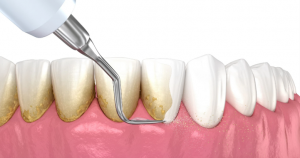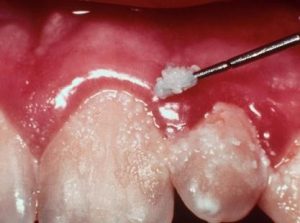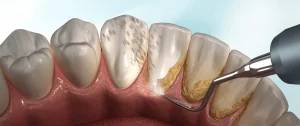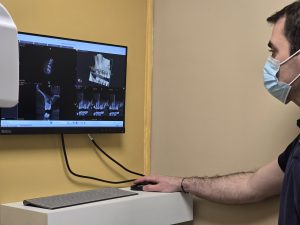Periodontics
Periodontology, or periodontics, is a medical discipline that focuses on the management of conditions affecting all the tissues that surround and support the tooth within the dental arch (gum, periodontal ligament, bone).
Periodontitis is an inflammatory disease related to an imbalance in the oral flora. It leads to “tooth loosening.” The goal of treatment will be to restore this balance and periodontal health.
The main symptoms of periodontitis include:
- Gum bleeding
- Swollen, edematous gums
- Gum recession, giving the impression of longer teeth
- Increasingly significant black holes between the teeth
- Halitosis (bad breath)
- Dental migration (movement of teeth in the arch)
- Dental mobility
The stages of tooth loosening
It all begins with bacterial gingivitis, which is characterized by inflammation of the gums. Gingivitis is reversible and not serious with the resumption of effective brushing.
Periodontitis follows gingivitis and is irreversible. The bone tissue and gums recede. If treatment is not initiated, it leads to tooth mobility and loss.
Procedure for non-surgical treatment
Your periodontist will first meet with you for a consultation to establish an initial connection.
They will ask you questions about your medical and surgical history, any ongoing treatments, and your oral hygiene habits, followed by a clinical examination.
A quote will be provided at the end of this consultation.
The periodontal assessment is the first step in the treatment.
A thorough clinical examination of the gums is performed, including the measurement of attachment loss (measurement of “tooth loosening”).
A long cone radiographic examination is also carried out.
During this assessment, if any treatments need to be performed, your periodontist will refer you to your treating dentist to carry them out.
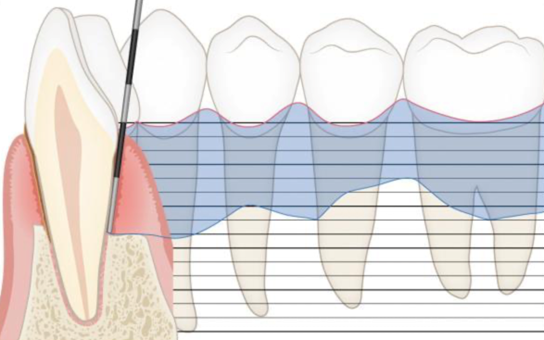
Periodontal decontamination is the procedure that eliminates the subgingival biofilm and tartar deposits. During this session, your periodontist will take the time to teach you a brushing technique along with the calibration of interdental brushes. The goal is for you to be able to brush effectively to maintain a bacterial balance that favors periodontal health.
The periodontal reevaluation (or end-of-treatment assessment) is conducted 6 to 8 weeks after the periodontal decontamination. This examination allows for observation of tissue healing by comparing it to the initial periodontal assessment. If periodontal pockets persist despite initial treatment and rigorous plaque control, complementary therapy may be discussed during this session. It is during this periodontal reevaluation that the follow-up schedule (i.e., periodontal maintenance) will be established.
Periodontal maintenance, or periodontal follow-up, helps to maintain the results achieved. The frequency of follow-up varies depending on the patient, their plaque control, and any individual risk factors. Adherence to these follow-up sessions determines the stability of periodontal disease.
